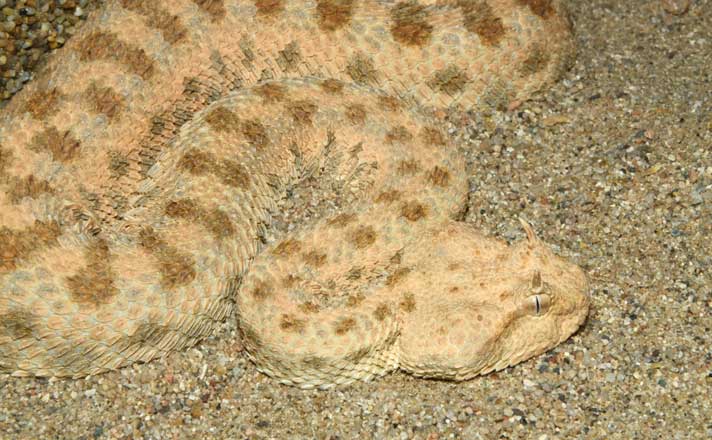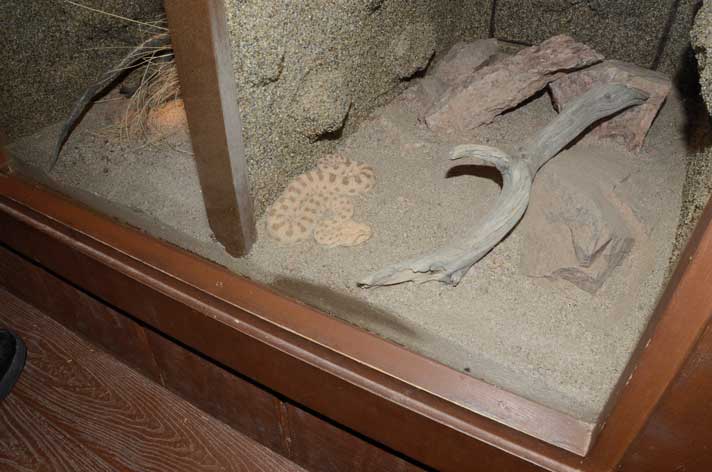When photographing reptiles behind glass, let the flash strike it from an angle of 15 degrees off the perpendicular or greater.
Question: Are all the photos in REPTILES taken of reptiles that are free-roaming? What I mean is, not behind glass? The reason I ask is because when I try to photograph reptiles at the zoo, I often get light glare ruining them.
D. Newcomb, Arlington, Va.

bill love
Close-up of a horned sand viper (Cerastes cerastes) was taken through glass at the Phoenix Zoo.
Answer: The majority of herps shown in photos in REPTILES, and otherwise, are recorded as seen directly, without a glass barrier obstructing the view. Not that glass is necessarily an obstruction if it’s clean and unscratched, but glass can be problematical to shoot through. A simple method can solve 90 percent of that.

bill love
The second photo taken from further back.
Never aim your flash straight at your subject behind the glass of a cage or display. Let the flash strike it from an angle of 15 degrees off the perpendicular or greater. Even high-quality glass is not perfectly clear, so some light bounces back from its surface. The trick is to let the light penetrate glass from an angle that won’t bounce off glass into your camera’s lens.
Want To Learn More?
Shooting Reptiles With Your Cell Phone Camera
Think of it as if you were playing billiards. Imagine that a ball is coming out of your flash and will ricochet off the glass at the opposite angle. If it would miss hitting your lens, then light from your flash reacting the same way will likely miss bouncing back into your lens and spoiling your photo.
Bill Love photographs herps in nature, writes and lectures. He assists his wife, Kathy, with her business, CornUtopia, and via his company, Blue Chameleon Ventures, leads nature tours to view herps in Madagascar.


